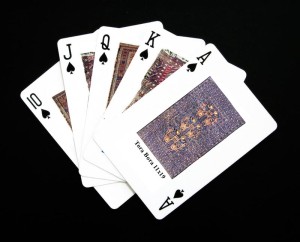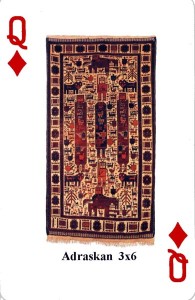In spring 2002, CARPA and the Getty Museum in Los Angeles developed a set of playing cards to help troops in Afghanistan identify the most-wanted carpets for the Getty collections, mostly antique and specific styles of patterns that have been sought after by collectors over the last decades. The cards, officially called the Loot Identification Playing Cards (LIPC), nicknamed “the swag deck,” has apparently been printed in several updated editions since then and distributed amongst personnel in the forward-operating teams.
Several times over the last decades, the J. Paul Getty Museum has been in looting scandals, including the 1640 Pieter Molijn painting “Landscape With Cottage and Figures” the Getty says it bought in good faith at a 1972 auction. In 1999 the Getty Museum handed back to Greece a red-figure kylix from the 5th-century BC, signed by the painter Onesimos and the potter Euphronios, that had been looted from the Etruscan site of Cerveteri. In 2010 they were revealed to have acquired fresco paintings from Pompeii through clandestine channels. The former curator at the Getty, Dr. Marion True, is on trial in Italy on conspiracy charges for the looting. The full extent of the CARPA-Getty collaboration is only now starting to appear.
According to UNESCO, almost no antiques remain in Afghanistan today.


